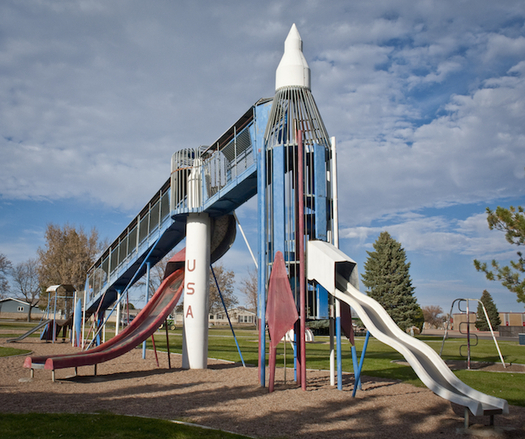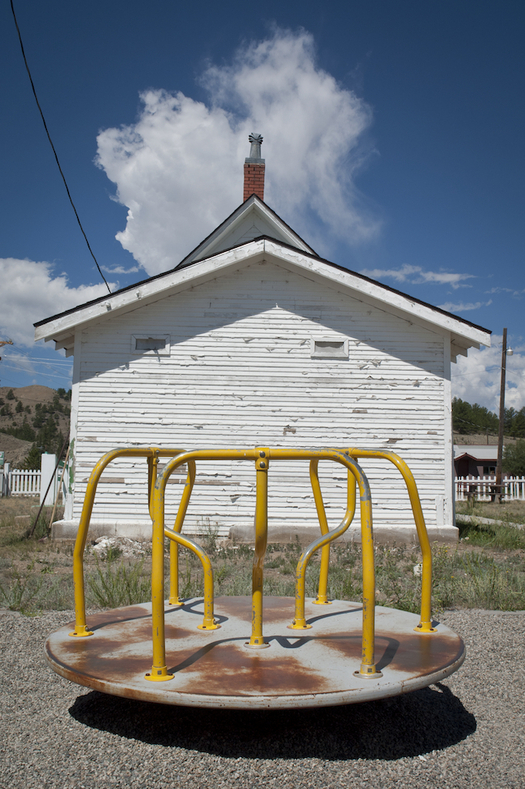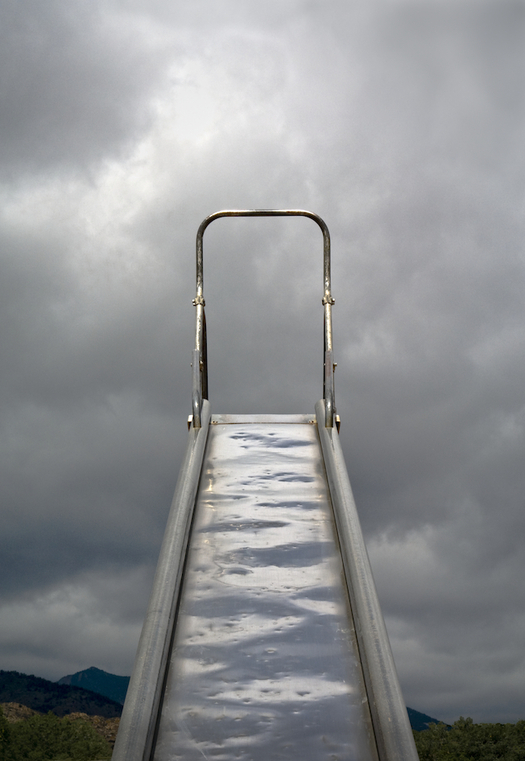
Rocket ship playground, Burlington, Colorado (2009), Brenda Biondo via Hyperallergic.
Hyperallergic had a nice writeup the other day on a book of photographs by Brenda Biondo: Once Upon a Playground: A Celebration of Classic American Playgrounds, 1920-1975. I loved the pictures, but I was also struck by the headline: “Nostalgia for the Disappearing Danger of Mid-Century Playgrounds.”
I am attracted to the idea that the “classic” playground entails “danger” — and that our emotional response to that might be “nostalgia.”
I think this actaully makes sense. Absent of, say, children, or other signs of life, some of thes objects do look vaguely menacing. (Even the groovier ones, like the rocket-ship playground above, seem a little spooky.)
It’s certainly the case, if my childhood memories are reliable, that the playgrounds of the past entailed physical peril: I injured myself on more than one play-oriented public contraption. Maybe I was simply a klutz, but in any case there is something almost threatening to me about the hard, hot, metal objects, the sharp edges and unforgiving surfaces, that Biondo documents. There's a sense of spinning risk that we used to simply accept as part of the cost of doing fun.
Maybe the nostalgist views these as reminders of a time when we didn't worry so much? Evidently such playgrounds are disappearing. And I recall a very thoughtful talk at the 2011 D-Crit Conference about the need to rethink the design of these spaces. Arguably, in fact, what we have here is a pleasing documentation of dubious design — dubious design that, somehow, we are sorry to see disappear.

Hartsel, Colorado (2011) Brenda Biondo via Hyperallergic.

Two-way climber, Colorado Springs, Colorado (2006) Brenda Biondo via Hyperallergic.

Colorado Springs, Colorado (2006), Brenda Biondo via Hyperallergic.
